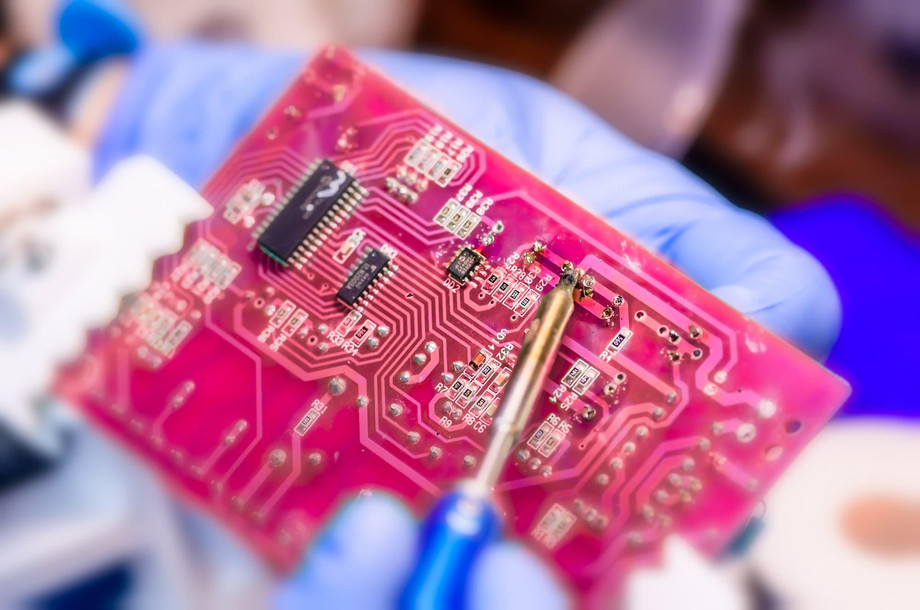Intelligent gadgets are all around us: self-driving cars, fitness trackers that track activity, and thermostats that can recognize your behaviors. These technological wonders are made possible by embedded systems, which are tiny computers built to carry out certain functions inside bigger systems.
In order to produce these intelligent gadgets, hardware and software design are combined in the interesting field of embedded systems development. However, entering this field can seem intimidating to novices. Fear not—this tutorial will teach you the fundamentals of successful embedded design, putting you on the fast track to becoming an expert in embedded systems!
Understanding embedded systems
Before diving into design principles, let's establish a clear picture of what embedded systems are. Unlike your personal computer, an embedded system is a dedicated computer chip designed for a particular function within a larger device. This chip houses the hardware (processor, memory) and software (operating system, application code) needed to complete that specific task.
Here are some key characteristics of embedded systems:
-
Resource-constrained: Memory, processing power, and storage are often limited in embedded systems.
-
Real-time operation: Embedded systems often need to react to events within a strict timeframe. For instance, an anti-lock braking system in a car needs to respond very quickly to prevent skidding.
-
Application-specific: Embedded systems are designed for a single purpose, making them highly specialized.
Embedded Systems Development: A Balancing Act
Developing embedded systems involves a delicate balancing act between functionality, resource limitations, and cost-effectiveness. Here's how the key principles guide you in achieving this balance:
1. Define requirements. Clearly
The foundation of any successful embedded design is a clear understanding of the system's requirements. This includes:
-
Functionality: What specific task(s) should the system perform?
-
Performance: How fast does the system need to respond?
-
Power Consumption: How much power can the system draw? Battery life is crucial for many devices.
-
Cost: What is the budget for developing and manufacturing the system?
2. Hardware Selection: Size Matters
Embedded systems often have size limitations. Choosing the right hardware components—processor, memory, and peripherals—is crucial. Here are some factors to consider:
-
Processing Power: The processor needs to be powerful enough to handle the required tasks efficiently.
-
Memory: There should be enough memory (RAM and storage) to run the application smoothly.
-
Peripherals: Select peripherals (e.g., sensors, communication interfaces) that suit the system's functionality. Look for components with low power consumption options, if applicable.
3. Embrace the Power of Embedded Systems Programming
Embedded systems programming utilizes specialized programming languages like C and C++ to interact with the hardware and achieve the desired functionality. Here are some key aspects to consider:
-
Efficiency: Write code that is optimized for the specific hardware platform, minimizing resource usage.
-
Real-time Programming: Understand concepts like interrupts and timers to ensure timely responses.
-
Debugging: Developing robust debugging techniques is crucial for embedded systems due to limited resources and real-time constraints.
4. Leverage Embedded Systems OS (Optional)
For complex embedded systems, consider using an embedded systems operating system (OS). While some simpler systems might not necessitate an OS, it can offer several benefits:
-
Task Management: An OS allows you to manage multiple tasks efficiently, ensuring smooth operation.
-
Device Drivers: An OS often provides pre-written device drivers, simplifying hardware interaction.
-
Memory Management: Memory management features in an OS can help optimize memory usage.
5. Prioritize testing and validation.
Testing and validation are paramount for ensuring the embedded system functions as intended. This includes unit testing (individual components), integration testing (combined components), and system-level testing (the entire system).
-
Unit Testing: Test individual software modules to verify their functionality.
-
Integration Testing: Test how different modules interact with each other.
-
System-level testing: test the complete system under real-world conditions to identify any issues.
Bonus Advice: Welcome to Lifelong Learning
The development of embedded systems is an ever-changing field. Innovations and new technology appear on a regular basis. Success requires keeping up with the most recent technologies and developments.
The following resources can help you on your learning path:
-
Tutorials and online courses for embedded systems development
-
Books about programming and designing embedded systems
-
Online forums and communities for fans of embedded systems
In summary
You can become an expert in the field of effective embedded design by adhering to these fundamental ideas and cultivating an attitude of constant learning. Keep in mind that the process begins with a thorough comprehension of the system's requirements and a desire to develop.
To Know More About embedded design

